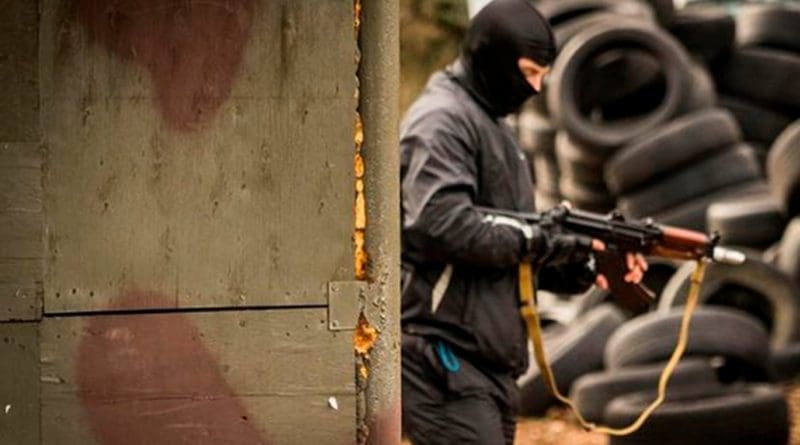Countering Transnational Crime Demands Greater Global Cooperation – Analysis
By Tuan N Pham*
Transnational organised crime (TOC) is becoming an increasingly global problem that will require international and interagency coordination, network analysis and information sharing. Drug trafficking accounts for 30 per cent of the proceeds of TOC. It also includes a wide-range of other criminal activities such as human trafficking, arms trafficking, migrant smuggling, counterfeit goods, environmental crime, cybercrime, illegal unreported and unregulated fishing and money laundering. TOC groups seldom constrain themselves to just one criminal activity, instead maximising profit while minimising risk.
TOC is one of the root causes of human suffering and socioeconomic instability. It undermines regional and global governance and threatens public safety and health. TOC is conducted by transnational crime and drug trafficking organisations that partake in a range of illegal enterprises.
These criminal networks do not respect borders or laws. They move their illicit goods along expansive and resilient supply chains. In short, it will take an agile global network to defeat an agile global network. Like modern warfare, TOC is transnational, multi-functional and multi-domain. The nature and character of means used to counter TOC must be too, with the acknowledgment that it is an enduring global problem. Efforts to counter TOC must continue to evolve in order to minimise its impact.
The fight against TOC requires not just any counter-network, but an agile global network of international, regional and interagency security law enforcement partners working in concert to disrupt and degrade transnational crime and drug trafficking organisations and stem their illicit operations and activities.
Establishing such an interconnected network necessitates sharing information for shared situational awareness, passing actionable intelligence for collective actions, coordination and helping to improve the capabilities and capacities of each law enforcement partner. Connecting distinct parts of the network to take quick and decisive actions is central to success in countering TOC.
Countering TOC also requires a global and unified enterprise approach to cut across the many affected parties for effectiveness and efficiency. Greater efforts are also needed to bolster cooperation on mutual legal assistance in criminal matters protocols to further advance cross-border criminal investigations. This must include addressing capability and capacity gaps to identify enterprise solutions. Efforts to counter TOC should also streamline structures and processes to enable synchronised, distributed and integrated law enforcement operations and activities across the integrated globe and interconnected domains for the unity of effort.
Another key mechanism to improve efforts to counter TOC is conducting intelligent network analysis to better target transnational crime and drug trafficking groups. This involves determining TOC vulnerabilities through methods like extant cargo analysis capability that targets vulnerable transport nodes. Governments should select and prioritise organisations to target and execute counter TOC operations that undermine entire TOC networks and enablers. Lastly, countering TOC must also invest in the tools necessary to expand counter threat finance and enable threat finance intelligence capabilities, enhancing the ability to target the cashflows of transnational crime and drug trafficking organisations. It is critical to follow the money otherwise countering TOC becomes a reactive and endless whack-a-mole drill.
The cyberspace and information domains offer promising non-kinetic actions, increasing the range of tools that can be brought against threat networks. Instead of relying solely on kinetic actions by the US and foreign law enforcement partners to interrupt a transnational crime organisation’s global supply chain, efforts to counter TOC should leverage growing US and allied cyberspace and information capabilities to further stem illicit operations and activities.
Potential cyberspace and cognitive effects to change illicit behaviour include surreptitiously disrupting and degrading the flow of illicit goods and commodities and furtively conducting information operations to sow confusion, friction and conflict amongst the various transnational crime organisation. The strategic agility and operational flexibility of cyberspace and information operations actions offer more promising results than traditionally available options.
Persistent cyberspace operations will also help network analysts further identify, understand, illuminate and target threat networks that increasingly utilise information systems to conduct and mask criminal activities in today’s globalised economy. Ever-evolving transnational crime organisation have considerable funds at their disposal to circumvent law enforcement tools and actions, underscoring the imperative to develop future capabilities to keep pace with the enduring threat.
Countering TOC requires partnerships at all levels and in many countries. Like climate change, TOC is an opportunity for the international community to come together against an increasingly unacceptable shared problem and global threat. Inadequate action or inaction invite more needless human suffering and socioeconomic instability and further weakens the rules-based global order that has provided global security and prosperity for over 70 years.
*About the author: Tuan Pham is a widely published strategic thinker and strategist in national security affairs. The views expressed here are his own.
Source: This article was published by East Asia Forum

